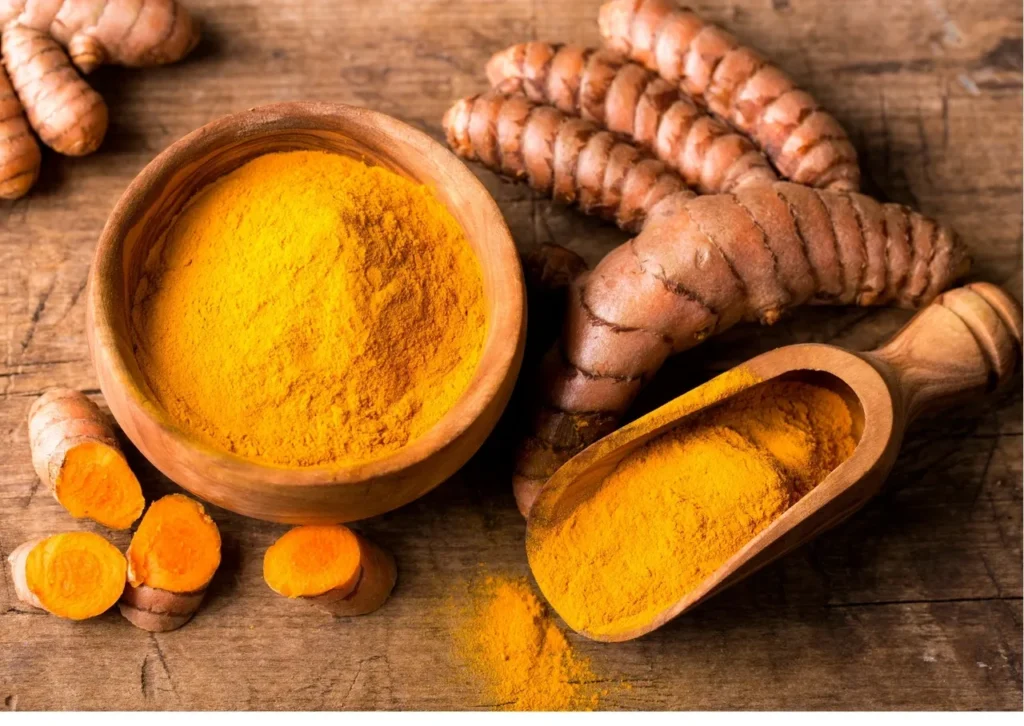
Turmeric for New Mothers

Turmeric for New Mothers
In Ayurveda, turmeric is known as Haridra – that which improves skin complexion. It is mainly used in dried form, which is easier to digest. The most famous active ingredient is curcumin. Please note that curcumin is not turmeric and that Ayurveda always advocates the use of the whole herb. The natural synergy of whole herbs cannot be achieved by extracting only one active ingredient.
Turmeric can be a powerful ally during delicate postpartum days. While our body is restructuring itself in these first few days, our defences and digestive strength are low. Here are seven reasons why turmeric should be part of your postpartum care spice cupboard.
1. Supports postpartum healing
Turmeric is probably best known for its anti-inflammatory properties. In the postpartum period, the anti-inflammatory action can lower the risk of infection and reduce postpartum swelling and soreness.
2. Boosts immunity
Our immune system is weak after birth, and it takes a while to build it back up. Turmeric is a potent antioxidant and immunity booster. Moreover, as a known anti-viral, anti-fungal and antibacterial herb, it supports our immune system in fighting off illness in this delicate time.
3. Reduces stress, boosts brain function and fights postpartum depression
Turmeric can help to improve blood circulation, boost brain function and improve memory. It also may act as a natural anti-depressant by raising dopamine levels and smoothing out the postpartum hormone rollercoaster.
4. Prevent and combat mastitis
In many South Asian countries, turmeric was traditionally used to treat mastitis. Thanks to its anti-inflammatory, antibacterial and antioxidant properties, turmeric can help prevent swollen breasts and clogged up milk ducts, especially when you react at the first signs of mastitis.
5. Skin Super Herb
As its Sanskrit name suggests, turmeric is a skin superhero. It improves complexion, clears outbreaks, and reduces itching in allergic skin reactions. If you have dark skin patches due to the pregnancy hormone changes, try applying turmeric to lighten the spots. Its antioxidant properties not only help to clear skin outbreaks but may also help with reducing or preventing stretch marks. You can apply a mask to the relevant areas. See the recipes for the skin mask below.
6. Improves lactation
Another traditional postpartum use of turmeric is to improve lactation. Combined with other galactagogue herbs, you can make yourself a powerful lactation infusion to encourage an increase in breast milk supply. Due to its detoxifying qualities, you may also be improving the quality of your breastmilk.
7. Improves digestion, detoxifies blood and skin
In Ayurveda, turmeric is known to reduce bloating and constipation. It also acts on the liver and helps to detoxify blood and skin. After birth, your digestion will be weak. Your organs, muscles and digestive enzymes need some time to realign themselves and come back into full power. Taking turmeric can support you in this process.
How to take turmeric
We have put together a few simple ways in which you can include turmeric into your postpartum care routine.
Golden Milk
Make yourself a nourishing hot drink with turmeric and some other spices. You can sip one or two cups a day.
Mix one cup of milk with one cup of water and simmer until the liquid has been reduced to one cup (about 15 minutes). Towards the end, add 1 tsp ghee, 1 tsp turmeric, 2 cardamom pods, 1 tsp dry ginger powder, ⅓ tsp nutmeg, a little sweetener (use jaggery or similar, remember not to heat honey).
Turmeric Skin Mask
Miks 1 tbsp yoghurt with 1 tsp of turmeric and ½ – 1 tsp of honey.
Apply the mask on dark spots, stretch marks or just your face to brighten up your complexion. Leave for about 15-20 minutes and then wash off.
Are you worried you will look yellow if you apply turmeric to your skin? Be assured that turmeric usually only stains dead skin, and the thick skin on our hands and feet. At India, the bride and her guest receive a full body turmeric treatment to give the whole wedding party a beautiful glow. Try it for yourself and see how radiant your skin will look




